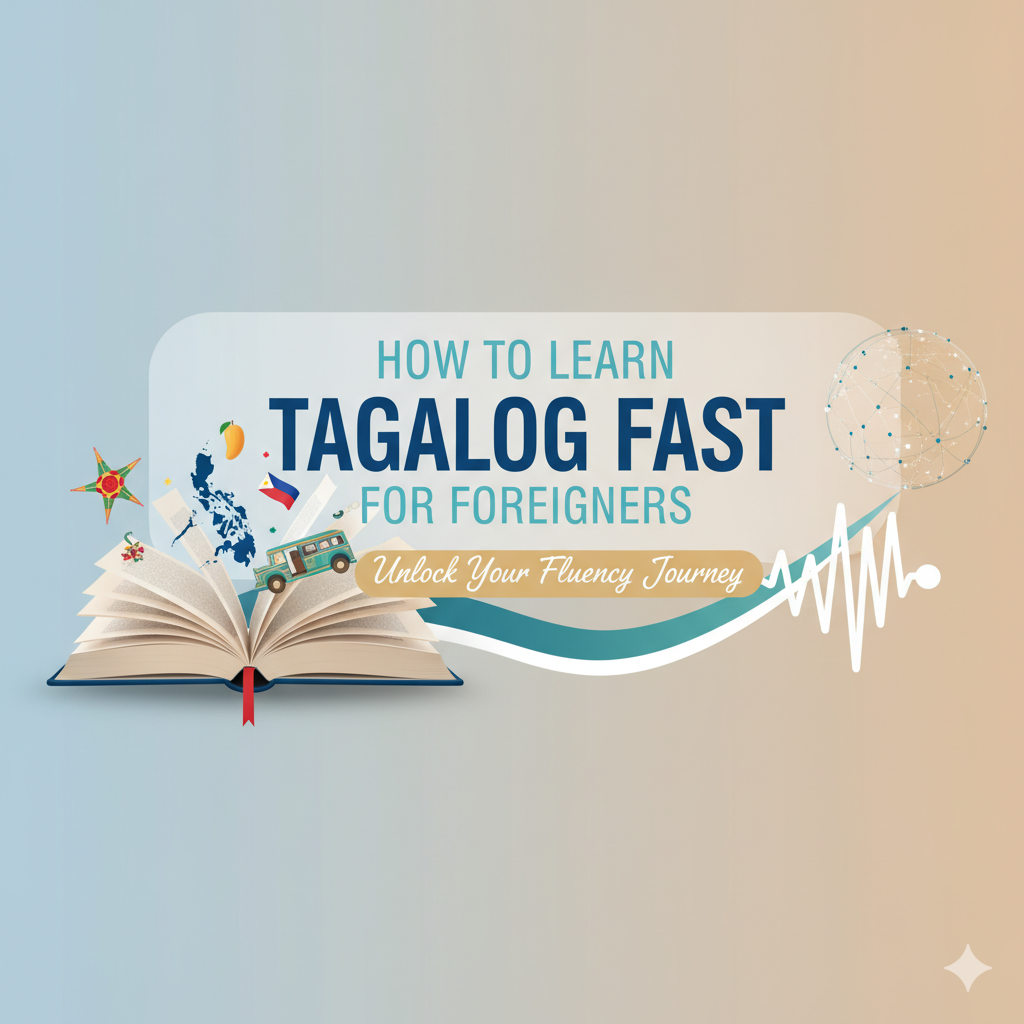Fast Tagalog for Foreigners: Practical, Rapid Learning Plan
Learning a new language quickly is possible with the right plan, and if your goal is how to learn Tagalog fast for foreigners, this guide gives a simple, practical roadmap. In this article you’ll get focused techniques that fit busy schedules and real-world practice tips.
This three-paragraph intro sets the tone: short, actionable, and realistic about progress. If you’re serious about how to learn Tagalog fast for foreigners, you’ll need deliberate practice, a few high-quality resources, and daily speaking drills to speed up retention.
By the end you’ll have a 30/60/90-day plan, resource list, common pitfalls, and FAQs to answer the most pressing questions about how to learn Tagalog fast for foreigners. Read on and start speaking sooner than you think.
Why learning Tagalog fast matters
Tagalog opens social and professional doors in the Philippines. Fast progress builds confidence and helps you navigate everyday situations—ordering food, taking a jeepney, making friends. Focused learning cuts through overwhelm and keeps motivation high.
Core principles (what actually works)
-
Frequency over duration — 20–30 minutes daily beats 3-hour weekly cramming.
-
Active speaking — produce words early; aim for a 70/30 speak-listen ratio.
-
Spaced repetition — use flashcards for vocabulary and phrases.
-
Contextual learning — learn phrases used in real life, not isolated words.
30-day starter plan (weeks 1–4)
Week 1: Learn 100 survival phrases (greetings, ordering, directions). Practice role-play with a language partner.
Week 2: Add numbers, time, and days. Build 50 sentences using the new words.
Week 3: Focus on common verbs and simple grammar (actor-focus, object-focus basics).
Week 4: Daily mini-conversations — 5 minutes each — and listen to Tagalog podcasts or YouTube breezy vlogs.
Techniques that speed progress
If you’re wondering how to learn Tagalog fast for foreigners, prioritize speaking practice and immersion tactics that force active output.
-
Shadowing: listen to short clips, speak along simultaneously to match rhythm and intonation.
-
Sentence mining: collect useful sentences from shows and repeat them until natural.
-
Language exchange: trade 15–20 minutes of English for Tagalog with a partner.
-
Speak-first drills: talk about your day using target structures, even if imperfect.
Best resource mix
-
Mobile apps for SRS (spaced repetition): use one for flashcards and review every day.
-
A pocket phrasebook or PDF with 200 phrases.
-
A beginner Tagalog podcast or short YouTube channels tailored to learners.
-
A tutor for weekly corrective feedback (online platforms are affordable).
Suggested mini-resources: short 5–10 minute clips for shadowing, a phrase deck you can review on the commute, and a weekly language exchange schedule you stick to.
Grammar shortcuts for foreigners
Tagalog grammar looks tricky but you can shortcut it:
-
Start with actor-focus verb forms and the simple past/present markers.
-
Use common linker na and particle pa early so your sentences sound native.
-
Ignore complex affix layering at first; focus on comprehensible communication.
Example: instead of memorizing long verb chains, learn Kumain ako (I ate) and Kumakain ako (I am eating) and practice swapping nouns to build dozens of new sentences quickly.
Cultural tips
Politeness and small talk matter—learn po/opo (politeness markers) and common courtesy phrases. Non-verbal cues and humor play a big part in casual conversations.
Common mistakes to avoid
-
Relying only on apps — they teach vocab but not conversational flow.
-
Waiting until you “feel ready” — start speaking Day 1.
-
Mixing dialects — Tagalog has regional variants; focus on standard Manila Tagalog initially.
10 essential starter phrases
-
Kumusta? — How are you?
-
Magandang umaga — Good morning
-
Salamat — Thank you
-
Paumanhin / Pasensya na — Sorry / Excuse me
-
Magkano ito? — How much is this?
-
Saan ang banyo? — Where is the bathroom?
-
Pakito po — Please (polite request)
-
Maaari ba kitang kausapin? — May I talk to you?
-
Hindi ko naintindihan — I didn’t understand
-
Tulungan mo ako, please — Please help me
Practice these phrases aloud until they feel natural; they cover greetings, directions, shopping and basic politeness. Being able to use these ten phrases will dramatically increase your confidence in real-life interactions and make early conversations much smoother.
Sample 90-day roadmap
-
Days 1–30: Survival and core vocabulary. Practice daily mini-dialogues like ordering food and asking for directions.
-
Days 31–60: Expand to 1,000 words and begin long-form listening; try transcribing short clips.
-
Days 61–90: Intensive speaking, structured grammar practice, and social immersion. Start recording yourself and compare to native speakers to fix pronunciation.
Quick checklist (daily)
-
20 min SRS review
-
15 min speaking / shadowing
-
10 min listening to native content
-
5 min writing 5 sentences
FAQs
Q: How long until I can hold a basic conversation?
A: With focused daily practice, expect to handle simple conversations in 4–8 weeks.
Q: Do I need a tutor?
A: Tutors speed feedback. A weekly tutor plus daily self-study is optimal but not mandatory.
Q: What’s the easiest way to remember verbs?
A: Use verbs in short sentences and apply spaced repetition.
Q: Can I learn Tagalog with English-based resources?
A: Yes—many high-quality resources are English-friendly and designed for foreigners.
Conclusion
If you want to know how to learn Tagalog fast for foreigners, commit to daily practice and real speaking from day one. Remember: consistency beats intensity — small, daily wins add up to fluency. For any foreigner asking how to learn Tagalog fast for foreigners, follow the 30/60/90 roadmap, prioritize speaking, and use spaced repetition. Start today and you’ll be surprised how quickly you progress in learning — especially if you focus on how to learn Tagalog fast for foreigners.
Tip: Track progress weekly; celebrate small wins. Language learning is a marathon — enjoy it.


